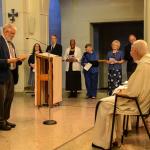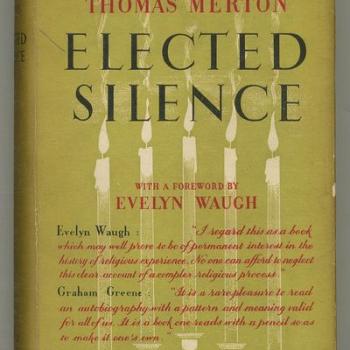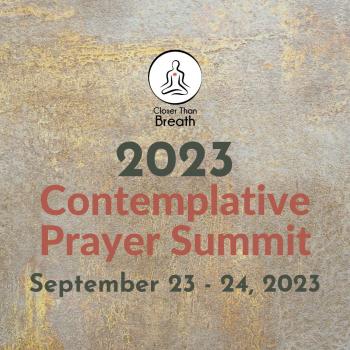In March 2020, shortly after the COVID-19 shelter-in-place orders started to show up at local and state governments across the land, I read somewhere — I don’t remember where — that dolphins had been seen in the canals of Venice. Perhaps it was this tweet:
Venice hasn't seen clear canal water in a very long time. Dolphins showing up too. Nature just hit the reset button on us https://t.co/RzqOq8ftCj
— Luca (@lucadb) March 17, 2020
Other stories were making their way around the interwebs. Not only dolphins, but swans were showing up in Venice. Wolves and other animals were walking into cities, emboldened by the lack of traffic. Even elephants were wandering into villages and China — and taking naps!
For me, and I suppose for many people (look at the over 37,000 likes the tweet above got), these stories represented some real hope, that even with the economic problems and general fear associated with the spread of COVID-19, that there was nevertheless hope to be found, if you knew where to look for it. Nature seemed to be saying, “Don’t worry, humans. There’s always hope — and when you slow down, and shelter in place, some good things can happen!”
I brought up the dolphins on at least one or two of the Encountering Silence podcasts recorded recently. Talked it up with a number of friends as well. “Dolphins in Venice” became my mantra for hope in the midst of so much uncertainty.
Today we were recording another episode of the podcast, and I brought up the dolphins again — and my cohosts pointed out to me that it wasn’t a true story.
Sigh.
https://twitter.com/dabeard/status/1243280630307262469?s=20
Nowadays we call this kind of thing fake news — a vulgar term made popular by a vulgar president. But not too long ago we would have just said this was an urban legend.
I hope we can reclaim the notion of urban legends. Not because I want to promote stories that aren’t true — like David Beard, I agree that those who debunk false stories are performing a public service. Snopes.com is one of my favorite websites.
But the concept of “urban legend” occupies a different kind of mythic space than does “fake news.” Fake news implies bad faith — a willful and perhaps even malevolent intent to deceive. An urban legend, on the other hand, might just be a story told for entertainment purposes, or to give kids the creeps around a summer campfire, or — as I believe is the case with the dolphins of Venice — intended to inspire a bit of hope or courage.
When people say the Holocaust never happened, that’s fake news. It’s disinformation spread with bad faith. But when we tell our kids that Santa will bring presents to the good children, that’s more properly called an urban legend. Parents are not intentionally hoodwinking their children or bribing them to be good. They are inviting their children into a space of mythical or magical thinking — where what is “true” or “false” is not just about what can be verified or measured, but rather about what can ignite the imagination, cultivate a sense of wonder, or inspire a willingness to hope and believe.
The Spirit of Believing
Santa Claus is “real” not because there is some fellow up in the arctic circle who runs a toy-making conglomerate only to give away all his products over a single night. Anyone over 8 years old knows that’s not true.
But like the movie Polar Express points out, Santa is “the spirit of Christmas.” Believing in Santa means believing in generosity, in giving, in kindness and celebration and good cheer.
If, when a child learns (or figures out) that the gifts under the tree come from Mom and Dad, what should we tell that child? Should it be: “Oh, glad you finally figured out that we were fooling you all this time” or maybe it should be: “It’s true that Santa only exists in our imagination, but he stands for something beautiful and real, so even us grown-ups still believe.”
I’m pretty clear what I would say. A child discovering that Santa isn’t “real” has an opportunity to learn one of two things: either that you can’t trust anybody, not even your parents — or that truth comes in many forms, not just on what could pass muster for the nightly news, or the Skeptics Society. The first option just cultivates cynicism, while the second option can help a child to begin to understand an adult approach to myth and spirit.
Once again, let me hasten to point out how much I admire the work of Snopes. Skepticism has its place — and the science lab and the nightly news are places where it belongs.
I think it’s only fair for people to know that the dolphins haven’t made it back to Venice — at least, not yet. But if you are like me, and that story inspired you, don’t see this as an invitation to despair, or to retreat into cynicism. Let it be an urban legend, rather than fake news.
Remind yourself why this story spoke to you so much in the first place. Maybe you loved it because you want to see a world where humanity and nature are partners rather than adversaries. Maybe you want to see a little bit of wildness even in our urban centers.
Whatever your reason for being inspired, hold on to that. That’s your hope, your dream, your vision. That’s what’s true. And what I mean by “true” is not whether or not it currently exists, but whether or not it’s worth believing in — as in, “What can we do, individually and collectively, to make this world a better place?” That’s the question we all need to be asking, and hopefully the question that will guide us in the choices we make, especially after the shelter-at-home restrictions are lifted.
What can you and I do, to help make the world the kind of place where, just maybe, someday the dolphins will return to Venice? Answer that question, and put your answer into action — and then the urban legend will have served its purpose.
Enjoy reading this blog?
Click here to become a patron.














